Waste Disposal in Flat Clearance

When it comes to waste disposal in flat clearance, the process can often seem daunting and overwhelming. Whether you’re moving out of a long-term residence, downsizing, or simply tidying up, proper waste management is crucial to ensure a smooth transition. Efficient waste disposal not only helps in maintaining cleanliness but also plays a significant role in environmental conservation.
Flat clearance involves removing unwanted items from a living space, which can range from furniture and electronics to personal belongings and general household waste. Without a structured approach, this task can quickly become unmanageable, leading to stress and potential environmental harm. Therefore, understanding the nuances of waste disposal in flat clearance is essential for homeowners, tenants, and property managers alike.
In this comprehensive guide, we will explore the various aspects of waste disposal during flat clearance. From understanding the different types of waste to implementing best practices and choosing the right disposal services, this article aims to equip you with the knowledge needed to handle waste efficiently and responsibly.
Understanding Flat Clearance Waste Disposal
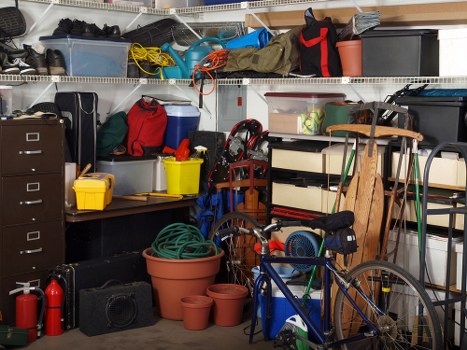
Flat clearance waste disposal refers to the systematic removal and management of waste generated during the process of clearing out a residential unit. This encompasses a wide range of materials, each requiring specific handling methods to ensure they are disposed of correctly.
Effective waste disposal in flat clearance involves several steps, including sorting, categorizing, and determining the appropriate disposal methods for different types of waste. By understanding the nature of the waste you’re dealing with, you can make informed decisions that benefit both your immediate needs and the broader environment.
Moreover, compliance with local regulations and environmental standards is a critical aspect of waste disposal. Different regions may have varying laws regarding what can and cannot be disposed of in certain ways, making it essential to be informed and prepared before undertaking a flat clearance project.
Types of Waste in Flat Clearance
During a flat clearance, the waste generated can be categorized into several types:
- Furniture and Appliances: Items such as sofas, beds, chairs, refrigerators, and washing machines often need special handling due to their size and potential for repair or reuse.
- Electronics: Old televisions, computers, and other electronic gadgets may contain hazardous materials and require specific disposal methods.
- General Household Waste: Everyday items like kitchenware, decorations, and clothing fall under this category and are typically easier to dispose of.
- Hazardous Materials: Substances like paints, chemicals, batteries, and light bulbs pose environmental risks and need careful disposal.
- Recyclable Materials: Paper, cardboard, glass, and certain plastics can often be recycled, reducing the overall waste footprint.
Regulations and Legal Requirements
Complying with local waste disposal regulations is imperative during flat clearance. These laws are designed to protect the environment and public health by ensuring that waste is handled safely and responsibly.
- Licensing: Some types of waste disposal require special permits or licenses, especially for hazardous materials.
- Segregation: Properly categorizing waste into recyclable, non-recyclable, and hazardous categories is often mandated by law.
- Disposal Methods: Certain wastes must be disposed of at designated facilities to prevent environmental contamination.
- Penalties: Non-compliance can result in hefty fines and legal repercussions, highlighting the importance of adhering to regulations.
Environmental Impact of Improper Waste Disposal
Failing to dispose of waste correctly during flat clearance can have severe environmental consequences. Improper disposal methods contribute to pollution, depletion of natural resources, and harm to wildlife.
- Landfill Overuse: Excessive waste can overwhelm landfill capacities, leading to increased pollution and greenhouse gas emissions.
- Soil and Water Contamination: Hazardous materials can leach into the soil and water sources, causing long-term environmental damage.
- Resource Depletion: Not recycling or reusing materials means that valuable resources are wasted, necessitating the extraction of more raw materials.
- Wildlife Harm: Improperly disposed waste can endanger animals, disrupting ecosystems and biodiversity.
Best Practices for Waste Disposal in Flat Clearance
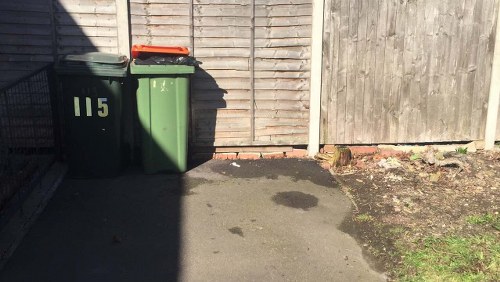
Adopting best practices in waste disposal ensures that flat clearance is conducted efficiently and sustainably. Implementing these strategies can significantly minimize environmental impact and streamline the disposal process.
1. Plan Ahead: Before initiating the clearance, create a detailed plan outlining the types of waste you expect to generate and the methods for disposing of each category.
2. Sort and Separate: Segregate waste into different categories such as recyclables, general waste, and hazardous materials. This makes the disposal process more manageable and compliant with regulations.
- Recyclables: Items like paper, glass, and certain plastics can often be processed for reuse.
- General Waste: Non-recyclable items that can be disposed of in standard waste collection systems.
- Hazardous Waste: Materials that require special handling due to their potential environmental or health risks.
3. Utilize Recycling Services: Partner with local recycling centers to ensure that recyclable materials are processed appropriately. This not only reduces landfill usage but also promotes environmental sustainability.
4. Manage Hazardous Waste Properly: Ensure that hazardous materials are disposed of at designated facilities. Avoid mixing these with general waste to prevent contamination.
5. Reduce Waste Generation: Wherever possible, minimize the amount of waste produced during flat clearance by donating usable items or repurposing materials.
Sorting and Categorizing Waste
Effective waste disposal begins with proper sorting and categorization. This process involves separating waste based on its material type and disposal requirements.
Start by creating separate containers or areas for different waste categories. Label these clearly to avoid confusion and ensure that waste is sorted accurately. Consider the following categories:
- Recyclables: Includes paper, cardboard, glass bottles, metal cans, and certain plastics.
- Non-Recyclable Waste: Items that cannot be processed for recycling, such as certain plastics, food waste, and contaminated materials.
- Hazardous Waste: Items that pose health or environmental risks, including batteries, electronics, paints, and chemicals.
- Bulky Waste: Large items like furniture and appliances that require special disposal methods.
Proper sorting not only facilitates efficient waste management but also enhances the potential for recycling and recovery of valuable materials.
Recycling and Reuse Opportunities
Recycling is a cornerstone of sustainable waste disposal. By reprocessing materials, we can reduce the demand for raw resources and decrease landfill usage.
- Recycling Centers: Utilize local recycling facilities to process recyclable materials effectively.
- Donation: Items in good condition can be donated to charities or second-hand stores, extending their lifecycle and reducing waste.
- Repurposing: Creative reuse of materials can give new life to old items, minimizing the need for disposal.
- Community Initiatives: Participate in local recycling programs and initiatives to promote broader community engagement in sustainable practices.
Engaging in recycling and reuse not only benefits the environment but can also contribute to cost savings by reducing disposal fees and promoting the sale or donation of usable items.
Safe Disposal of Hazardous Materials
Hazardous materials require meticulous handling to prevent environmental contamination and health hazards. These materials often contain toxic substances that can be harmful if not disposed of correctly.
- Identification: Clearly identify all hazardous materials present in the flat, including batteries, electronics, chemicals, and paints.
- Specialized Disposal: Utilize facilities that are equipped to handle and process hazardous waste safely.
- Proper Packaging: Ensure that hazardous materials are securely packaged to prevent leaks and spills during transportation.
- Regulatory Compliance: Adhere to all local regulations governing the disposal of hazardous substances to avoid legal repercussions and environmental harm.
By following safe disposal practices for hazardous materials, you protect both public health and the environment, ensuring that harmful substances do not cause unintended damage.
Choosing a Waste Disposal Service

Selecting the right waste disposal service is a critical decision in the flat clearance process. A reliable service provider can make the entire process more efficient, cost-effective, and environmentally friendly.
When choosing a waste disposal service, consider the following factors to ensure you select a provider that meets your specific needs:
- Service Range: Ensure the service covers all types of waste you need to dispose of, including bulky items and hazardous materials.
- Reputation: Research customer reviews and testimonials to gauge the reliability and quality of the service provider.
- Compliance: Verify that the service complies with local waste disposal regulations and environmental standards.
- Pricing: Compare pricing structures to find a service that offers value for money without compromising on quality.
- Availability: Check the service’s availability and flexibility to accommodate your clearance schedule.
Factors to Consider When Selecting a Service
Choosing the right waste disposal service involves evaluating several key factors to ensure alignment with your disposal needs and environmental responsibilities.
- Experience: Choose a service provider with extensive experience in flat clearance and waste disposal to ensure expertise and reliability.
- Certifications: Look for certifications or accreditations that demonstrate the provider’s commitment to environmental standards and best practices.
- Customer Support: Excellent customer service is essential for addressing any concerns or specific requirements you might have during the clearance process.
- Flexibility: Opt for a service that offers flexible scheduling and can accommodate last-minute changes or additional waste disposal needs.
- Environmental Commitment: Select a provider that prioritizes sustainable practices, such as recycling and reducing landfill waste.
Cost-Effectiveness and Efficiency
Balancing cost and efficiency is vital when selecting a waste disposal service for flat clearance. While affordability is important, it should not come at the expense of quality or environmental responsibility.
- Transparent Pricing: Ensure the service provider offers clear and upfront pricing with no hidden fees, allowing for accurate budgeting.
- Value-Added Services: Look for services that offer additional benefits such as recycling options, same-day pickup, or bulk waste handling at no extra cost.
- Efficiency: An efficient service can complete the waste disposal promptly, minimizing disruption to your moving or clearance schedule.
By focusing on both cost-effectiveness and efficiency, you can achieve optimal waste disposal results without exceeding your budget or compromising on service quality.
DIY Waste Disposal vs. Professional Services
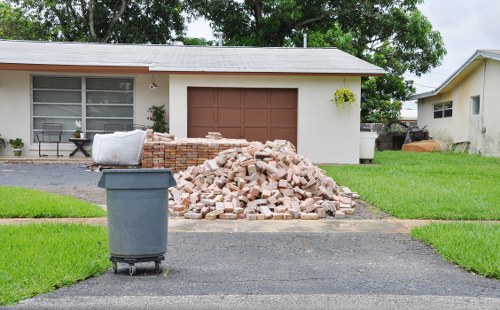
Deciding between a DIY approach and hiring professional waste disposal services is a crucial consideration during flat clearance. Both options have their advantages and drawbacks, and the right choice depends on your specific circumstances, budget, and waste management goals.
Understanding the differences between these two approaches can help you make an informed decision that aligns with your disposal needs and environmental responsibilities.
Pros and Cons of DIY Approach
Opting for a DIY waste disposal approach involves handling the entire process independently, without the assistance of professional services.
- Pros:
- Cost Savings: DIY can be more economical, especially for individuals with smaller amounts of waste.
- Control: Full control over the disposal process, allowing you to manage it according to your schedule and preferences.
- Flexibility: Ability to tailor the disposal process to your specific needs without being constrained by service providers’ schedules.
- Cons:
- Time-Consuming: Managing waste disposal independently can be time-consuming, particularly for large quantities or bulky items.
- Lack of Expertise: Without professional knowledge, there’s a higher risk of improper disposal, which can lead to environmental harm and potential legal issues.
- Physical Strain: Manually handling heavy or large items can be physically demanding and may require additional resources.
- Limited Resources: Access to recycling facilities and specialized disposal methods may be limited, reducing the efficiency of the process.
When to Opt for Professional Help
While the DIY approach may be suitable for some situations, there are scenarios where professional waste disposal services are highly recommended:
- Large-Scale Clearance: Handling significant amounts of waste or bulky items is more manageable with professional assistance.
- Hazardous Materials: Professionals are equipped to handle and dispose of hazardous waste safely and in compliance with regulations.
- Time Constraints: When time is of the essence, professional services can expedite the disposal process, ensuring timely completion.
- Lack of Equipment: Professionals have the necessary tools and vehicles to handle specialized disposal tasks efficiently.
- Environmental Responsibility: Professional services are more likely to adhere to sustainable practices, such as recycling and proper waste management.
In cases where efficiency, compliance, and environmental responsibility are paramount, opting for professional waste disposal services is the prudent choice.
Steps to Efficient Waste Disposal in Flat Clearance
Implementing a structured approach to waste disposal can enhance efficiency and ensure that all waste is managed appropriately. Here are the key steps to follow:
- Planning and Scheduling: Develop a clear plan outlining the timeline, responsibilities, and methods for waste disposal. Scheduling ensures that the process is organized and minimizes disruptions.
- Sorting and Packing: Categorize waste into recyclables, non-recyclables, and hazardous materials. Proper packing prevents contamination and makes transportation more manageable.
- Transportation: Arrange for appropriate transportation methods based on the types and volumes of waste. This may involve renting dumpsters, hiring waste collection services, or using specialized vehicles for hazardous materials.
- Disposal: Ensure that all waste is disposed of according to local regulations and environmental standards. Recycling and donating usable items contribute to sustainability, while hazardous materials should be handled by certified facilities.
- Final Cleanup: After waste disposal, conduct a thorough cleanup of the flat to ensure it is left in good condition, ready for the next occupant or for any further use.
Common Challenges and Solutions
Flat clearance waste disposal is not without its challenges. Addressing these obstacles proactively can lead to more efficient and effective waste management.
- Dealing with Large Items: Removing bulky furniture and appliances can be physically demanding and logistically challenging.
- Solution: Hire professional services equipped with the necessary tools and vehicles to handle large items safely and efficiently.
- Managing Hazardous Waste: Identifying and properly disposing of hazardous materials requires specialized knowledge and facilities.
- Solution: Utilize certified hazardous waste disposal services to ensure compliance with safety and environmental regulations.
- Limited Space: Navigating tight spaces and cluttered environments can complicate the clearance process.
- Solution: Develop a strategic plan that prioritizes accessible areas first and uses space-saving techniques to manage waste effectively.
- Time Constraints: Tight schedules can create pressure, leading to rushed and potentially improper disposal practices.
- Solution: Allocate sufficient time for each stage of the disposal process and consider professional assistance to meet deadlines without compromising quality.
Sustainable Waste Disposal Practices
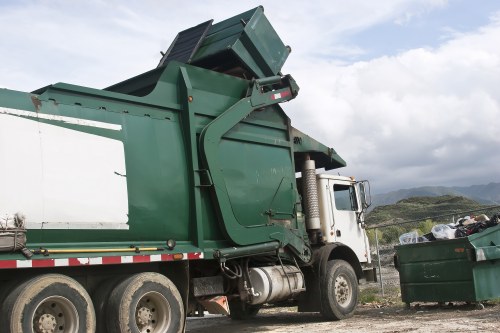
Incorporating sustainable practices into waste disposal not only benefits the environment but also promotes a responsible and ethical approach to flat clearance.
1. Reduce Waste Generation: Aim to minimize the amount of waste produced by repurposing items, donating usable belongings, and avoiding unnecessary purchases.
2. Promote Reuse and Recycling: Prioritize recycling and reusing materials to extend their lifecycle and reduce the burden on landfills.
- Donation: Donate furniture, clothing, and other usable items to charities or community centers.
- Recycling Programs: Participate in local recycling initiatives to ensure materials are processed correctly.
3. Choose Eco-Friendly Disposal Services: Select waste disposal services that adhere to sustainable practices, such as using eco-friendly vehicles and processing waste responsibly.
4. Educate and Engage: Inform yourself and others about the importance of sustainable waste disposal and encourage community participation in eco-friendly practices.
Reducing Waste During Clearance
Implementing strategies to reduce waste during flat clearance can significantly impact environmental conservation efforts.
- Minimalist Approach: Embrace minimalism by keeping only essential items, thereby reducing the volume of waste generated.
- Reuse Opportunities: Identify items that can be reused or repurposed, extending their usefulness and minimizing disposal needs.
- Digital Transition: Opt for digital copies of documents and media to reduce paper waste.
- Composting: Utilize composting for organic waste, turning it into valuable fertilizer for plants.
Promoting Reuse and Recycling
Encouraging reuse and recycling practices during flat clearance can lead to significant environmental benefits.
- Recycling Centers: Ensure that recyclable materials are taken to appropriate facilities for processing.
- Second-Hand Sales: Sell items that are still in good condition through garage sales, online marketplaces, or consignment shops.
- Community Sharing: Share items with neighbors or community members who may find them useful, fostering a sense of community and reducing waste.
- Upcycling: Transform old items into new, useful products through creative upcycling projects.
Case Studies

Examining real-life examples can provide valuable insights into effective waste disposal practices during flat clearance. Here are a couple of case studies that highlight successful strategies and outcomes.
Successful Flat Clearance Waste Disposal Examples
Case Study 1: Eco-Friendly Apartment Clearance
A family relocating from a large apartment engaged a professional waste disposal service that specialized in eco-friendly practices. The service sorted all waste into recyclable, non-recyclable, and hazardous categories. Recyclable materials were taken to designated centers, while hazardous waste was disposed of at certified facilities. Additionally, usable furniture and appliances were donated to local charities, reducing the overall environmental impact and ensuring that items found new homes instead of ending up in landfills.
Case Study 2: Minimalist Flat Clearance
An individual adopting a minimalist lifestyle decided to dispose of minimal waste during their flat clearance. They meticulously sorted through belongings, donating and selling almost everything that was not essential. By focusing on reducing waste generation from the outset, the individual was able to minimize the amount of waste requiring disposal, thereby reducing costs and environmental impact.
Technology in Waste Disposal
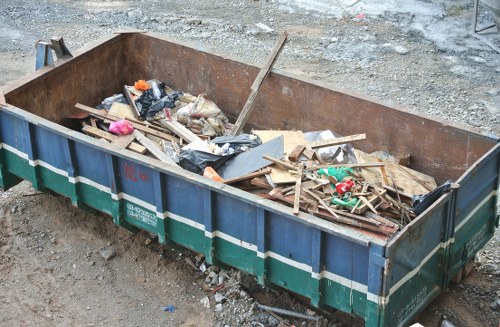
Advancements in technology have significantly enhanced the efficiency and effectiveness of waste disposal processes. Leveraging innovative tools and platforms can streamline flat clearance waste management, making it more organized and environmentally friendly.
Innovative Tools and Platforms
Modern technology offers various solutions to improve waste disposal during flat clearance:
- Waste Management Software: These platforms help in tracking waste quantities, categorizing types, and scheduling pickups, ensuring that waste disposal is systematic and efficient.
- Mobile Apps: Apps designed for waste disposal can connect users with local recycling centers, donation points, and disposal services, simplifying the process.
- GPS and Routing Systems: Advanced routing technologies optimize transportation logistics, reducing fuel consumption and minimizing the carbon footprint of waste disposal.
Tracking and Managing Waste
Effective tracking and management of waste are crucial for maintaining accountability and ensuring environmental compliance.
- Digital Logs: Maintain digital records of waste disposal activities, including types of waste, quantities, and disposal methods. This aids in auditing and regulatory compliance.
- Real-Time Monitoring: Utilize sensors and tracking systems to monitor waste levels in containers, ensuring timely pickups and preventing overflow.
- Data Analytics: Analyze waste disposal data to identify trends, optimize processes, and implement improvements for future clearance projects.
Future Trends in Waste Disposal for Flat Clearance
The waste disposal landscape is continually evolving, influenced by technological advancements, policy changes, and shifting societal priorities. Anticipating future trends can help individuals and businesses stay ahead in effective waste management during flat clearance.
Circular Economy and Its Role
The concept of a circular economy is gaining traction as a sustainable approach to waste management. Unlike the traditional linear economy, which follows a 'take-make-dispose' model, a circular economy emphasizes the reuse, recycling, and regeneration of materials.
- Extended Product Lifecycles: Encouraging the design of products that are durable, repairable, and recyclable to minimize waste.
- Resource Efficiency: Maximizing the use of resources by reusing materials and reducing the need for virgin resources.
- Collaborative Efforts: Fostering partnerships between manufacturers, recyclers, and consumers to create a closed-loop system that reduces environmental impact.
Policy Changes and Their Impact
Governments worldwide are implementing policies aimed at improving waste management practices and promoting sustainability. These policies can significantly influence how waste disposal is handled during flat clearance.
- Regulatory Incentives: Providing incentives for recycling and reuse initiatives to encourage compliance and participation.
- Ban on Single-Use Plastics: Restricting the use of single-use plastics to reduce environmental pollution and promote sustainable alternatives.
- Extended Producer Responsibility: Holding manufacturers accountable for the entire lifecycle of their products, including end-of-life disposal.
- Waste Reduction Targets: Setting national or regional targets for waste reduction to drive systemic changes in waste management practices.
Conclusion
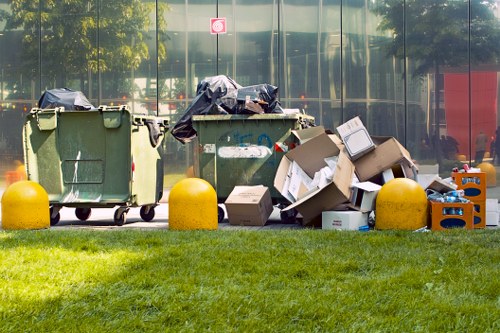
Effective waste disposal in flat clearance is a multifaceted process that requires careful planning, adherence to regulations, and a commitment to sustainability. By understanding the types of waste involved, implementing best practices, and choosing the right disposal services, you can ensure that your flat clearance is conducted efficiently and responsibly.
Embracing sustainable waste disposal methods not only benefits the environment but also contributes to cost savings and community well-being. Whether you opt for a DIY approach or professional services, the key is to manage waste thoughtfully and conscientiously.
Ready to make your flat clearance hassle-free and eco-friendly? Contact us today to learn more about our comprehensive waste disposal services tailored to meet your unique needs.
Frequently Asked Questions
Our team utilizes advanced waste collection tools and eco-friendly equipment to ensure efficient and safe flat clearance. From heavy-duty dumpsters to specialized item removal machinery, we handle all types of waste responsibly. Contact our team for a quick quote and experience our top-notch service.
Yes, we are proudly accredited by leading industry bodies, ensuring our waste disposal services meet the highest standards. These accreditations reflect our commitment to quality and reliability. Contact our team for a quick quote and trusted waste management solutions.
Absolutely. Our company holds all required certifications and comprehensive insurance to guarantee legal compliance in waste management within. This ensures your property clearance is handled safely and responsibly. Reach out to our team for a quick quote today.
We take environmental responsibility seriously, recycling up to 98% of materials from flat clearances. Our eco-friendly services ensure minimal landfill waste and promote sustainability. Contact our team for a quick quote and join us in making a greener community.
With over a decade of local experience, our trusted team specializes in flat clearance services near you. We understand the unique needs of residents and provide efficient, reliable solutions every time. Get in touch with our team for a quick quote.
Yes, our flat clearance services prioritize safety and affordability. We use licensed professionals and transparent pricing to ensure you receive quality service without breaking the bank. Contact our team for a quick quote and safe, cost-effective clearance.
Our ethical waste management practices focus on transparency and responsibility. We provide clear pricing, honest communication, and ensure all waste is handled according to regulations. Trust our local experts for a straightforward and reliable flat clearance experience.
Yes, we offer same-day flat clearance services to accommodate urgent needs. Our efficient team ensures quick and thorough waste collection, helping you reclaim your space promptly. Contact our team for a quick quote and fast, reliable service.
Absolutely. Our eco-friendly waste disposal solutions for flats near focus on recycling and responsible waste management. We strive to reduce environmental impact while providing top-quality clearance services. Reach out to our team for a quick quote and sustainable solutions.
During flat clearance, we offer specialized handling for fragile, hazardous, and valuable items. Our trained professionals ensure each item is safely managed and disposed of according to best practices. Contact our team for a quick quote and expert handling of your belongings.
We ensure pricing transparency for waste disposal by providing detailed quotes with no hidden fees. Our upfront pricing policy allows you to understand costs clearly before we begin. Trust our affordable and straightforward services by contacting our team for a quick quote.
Choose our company for flat clearance because of our extensive local experience, licensed professionals, and commitment to ethical, eco-friendly practices. We prioritize customer satisfaction and offer affordable, reliable services tailored to your needs. Contact our team for a quick quote and trusted clearance solutions.










